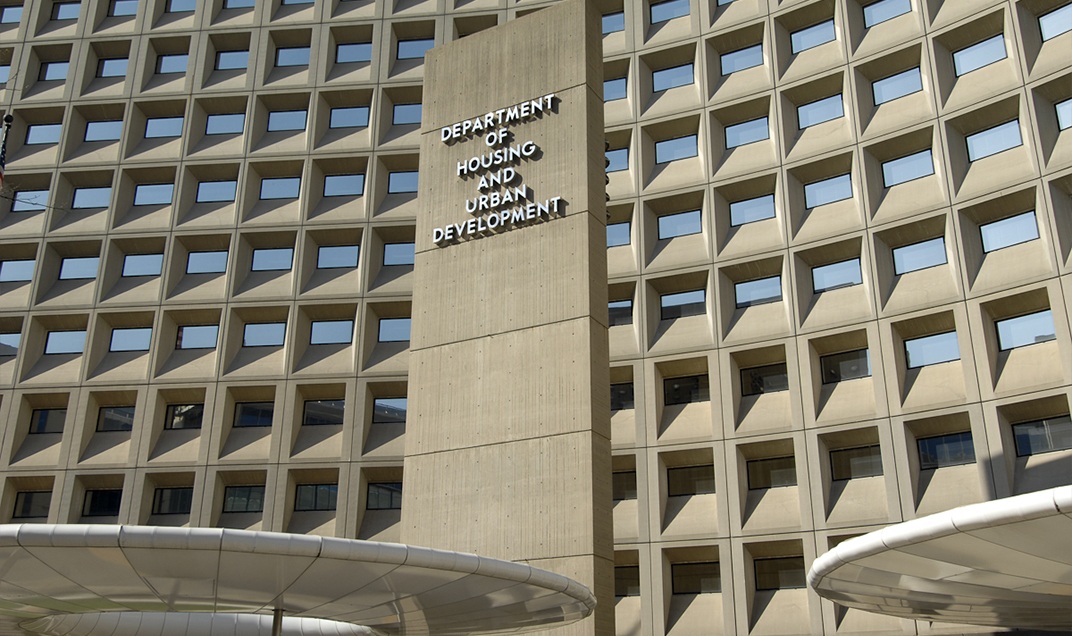

Trump is mulling an executive order that would ban "ugly" federal buildings and bring back classical styles.
Which strikes you as more classical, Ionic or the more ornate Corinthian column? Personally I go for your basic Doric. It’s less fussy. But I sometimes have trouble getting my triglyphs just right.
I start a column with columns because this could soon matter. The Trump administration is considering an executive order concerning federal building architecture. The draft EO calls for a return to classical architecture — it “shall be the preferred and default style absent special extenuating factors necessitating other style.”
 President Donald Trump is not alone in noting that the roster of federal buildings includes some homely humdingers. The EO calls out the headquarters of Labor, Health and Human Services, and Housing and Urban Development as “just plain ugly.” You’ve got to admit, they look like the architect was having an affair with the concrete contractor.
President Donald Trump is not alone in noting that the roster of federal buildings includes some homely humdingers. The EO calls out the headquarters of Labor, Health and Human Services, and Housing and Urban Development as “just plain ugly.” You’ve got to admit, they look like the architect was having an affair with the concrete contractor.
He blames a set of federal architecture guiding principles established during the Kennedy administration that “implicitly” discouraged classical “and other designs known for their beauty.” Worse, the guidance “declared that design must flow from the architectural profession’s resigning orthodoxy.” In other words, the nation started letting hoity-toity taste arbiters — they can probably tell white wines apart — design hideous buildings.
But wait! During the Clinton administration the General Services Administration, which largely oversees federal construction, established a Design Excellence Program to ensure buildings “provide visual testimony to the dignity, enterprise, vigor and stability of the American government.”
Who could disagree with that? Well, Trump thinks many ensuing buildings “have little aesthetic appeal.” The order declares, “the Federal government has largely stopped building beautiful buildings that the American people want to look at or work in.” The president is calling for new guiding principles to, yes, “make federal buildings beautiful again.”
This executive order would put federal architecture back into the people’s hands. GSA would have to convene panels of citizens to express their views but ban participation by artists, architects, engineers, art or architecture critics, and members of the building industry. My first thought was, would the panels include people who think the Super Bowl half-time show was in good taste?
The Trump administration is joining in a debate that’s gone on ever since people figured out how to use stone and logs to build shelters. As Federal News Network’s Jory Heckman reported, the architecture establishment is harrumphing that the draft order is even still in circulation within the White House. I like the tension between the “experts” and the plebes who live with their work. It’s an American tradition. The Trump harangue against prevailing architecture just happens to be a particularly funny addition.
In truth, the architecture profession, while indispensable, has helped create both breathtaking and inspiring built spaces, and structures that make you scratch your head. Yet even Brutalism can look okay. In Boston, the Christian Science Plaza encompasses a long, modern, concrete structure (by I. M. Pei, a Boston favorite, also of the Louvre glass pyramid fame) right next to the Romanesque mother church. Steps away stands the classical, if slightly ungainly, Boston Symphony Hall (by McKim, Meade and White). Somehow it all works as one of the pleasantest corridors in a great city.
I’ve written before about the HUD headquarters. Its jagged dreariness has acquired a sort of endearing quality, a badge of honor for those who endure it. The Trump draft EO would use renovations to move existing buildings to a more classical style. Somehow I don’t see a pediment and row of columns successfully grafted onto the Robert C. Weaver building, unless we wanted a federal version of Soldier Field.
Where’s Howard Roark when you need him?
Copyright © 2025 Federal News Network. All rights reserved. This website is not intended for users located within the European Economic Area.
Tom Temin is host of the Federal Drive and has been providing insight on federal technology and management issues for more than 30 years.
Follow @tteminWFED


